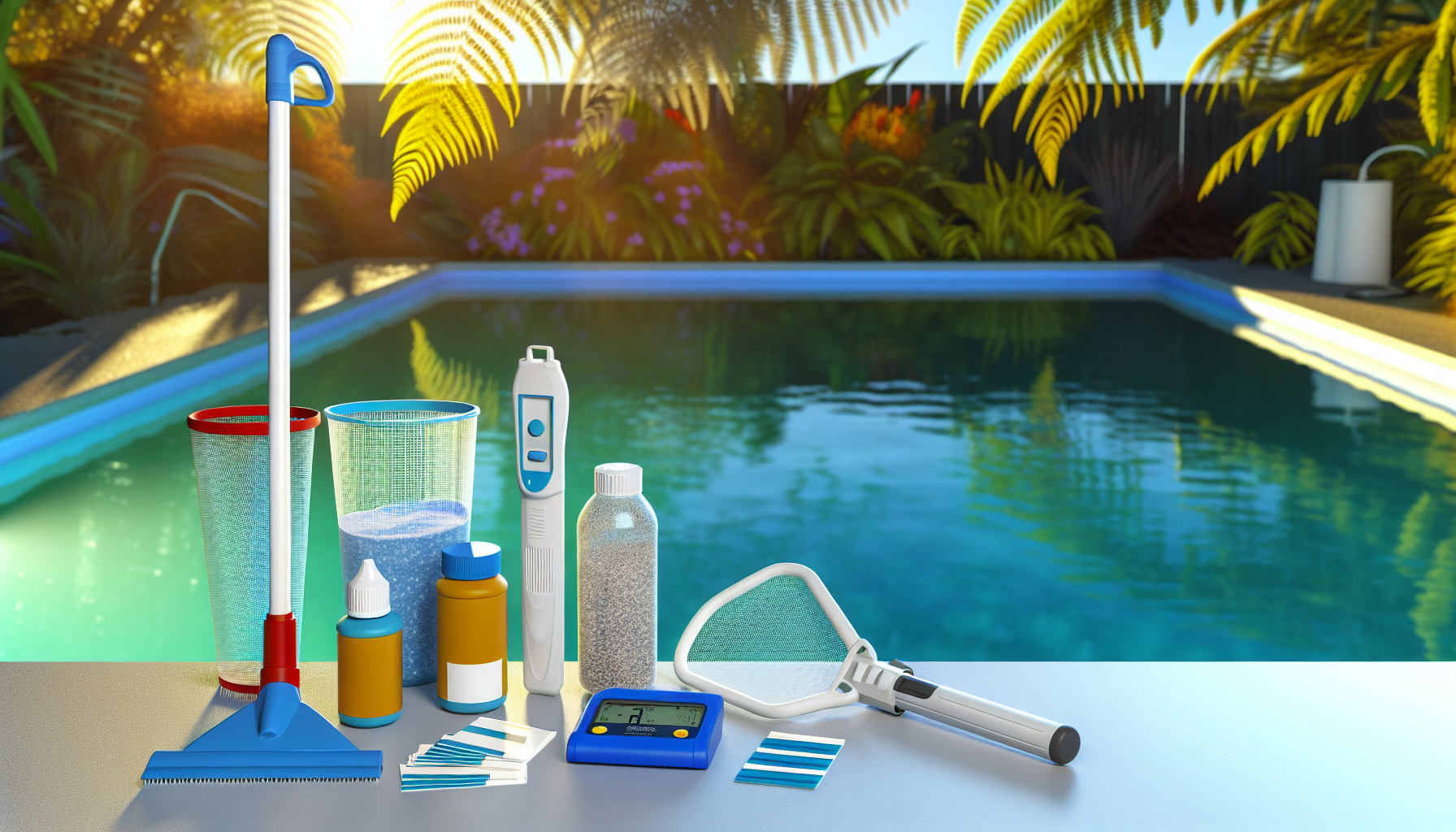Owning a pool in New Zealand is awesome—until you realise it won’t take care of itself. If you want clean, clear water without any nasty surprises, you’ll need a good maintenance routine. Don’t worry, though—it’s not as complicated as it sounds. Let’s break it down into a simple weekly plan, plus a few things to keep an eye on throughout the seasons.
Your Weekly Pool Maintenance Routine
Think of your pool like a car. If you don’t do small check-ups regularly, you’ll end up with a big, expensive problem down the track. Here’s what you should do each week to keep things running smoothly:
1. Skim and Remove Debris
Leaves, bugs, and other gunk end up in the water all the time—especially if your pool is near trees. Grab a pool skimmer net and scoop them out. Not only does this keep the water looking tidy, but it also stops debris from clogging the filter or breaking down into algae food.
2. Brush the Walls and Floor
Algae love sticking to pool surfaces, especially in those little corners where water doesn’t circulate well. Use a pool brush once a week to scrub the walls, steps, and floor. This helps stop slimy build-ups and keeps the water flowing properly.
3. Check and Clean the Filter
Your filter is the unsung hero of your pool. If it’s clogged, your water will turn green or cloudy in no time. Depending on your system, you’ll either need to rinse out the skimmer basket, clean the cartridge, or backwash the sand filter. Places like Pool & Spa Warehouse NZ have all the gear if you need replacement filters.
4. Test and Balance the Water
Here’s where things get a bit science-y—but don’t stress, it’s easy. Get yourself a simple pool test kit (you can find them at Bunnings Pool Care), and check the chlorine, pH, and alkalinity levels.
- Chlorine: Keeps the pool sanitised (aim for 1-3 ppm).
- pH level: Stops irritation and keeps chemicals working properly (aim for 7.2-7.6).
- Alkalinity: Helps stabilise pH (aim for 80-120 ppm).
If anything’s off, grab the right chemicals and adjust accordingly. Just follow the instructions—no need to overthink it.
5. Add Algaecide (If Needed)
If you’ve had issues with algae in the past, adding a dose of algaecide weekly can prevent a green disaster. This is especially handy if the weather’s been warm and humid.
Seasonal Pool Care (What Changes Throughout the Year)
Alright, so while the weekly steps stay the same, different seasons bring different challenges. Here’s what to tweak as the weather changes:
Summer (High Use = More Cleaning)
This is when your pool gets the most action, so stay on top of testing and cleaning. Swim oils, sunscreen, and heavy use can mess with the water balance quickly. Check chlorine and pH at least twice a week to prevent problems. Also, watch for evaporation—if the water level drops too much, your pump could suck in air and burn out.
Autumn (Leaves Everywhere! Watch the Filter.)
If you’ve got trees around, leaves will start dumping into your pool like nobody’s business. Check skimmer baskets and clean the filter more often. You might want to invest in a pool cover from Trade Tested to cut down on maintenance.
Winter (Time to Give It a Rest)
If you’re not using the pool in winter, switch to a “low maintenance” mode. Reduce the pump’s running time, but don’t turn it off completely—stagnant water can turn into a swamp. Add a winterising algaecide and keep checking chlorine and pH levels every couple of weeks. If you’re covering the pool, make sure it’s secured so it doesn’t collect rainwater and debris.
Spring (Wake It Up Again)
Before summer hits, give your pool a full check-up. Clean the filter, balance the water, and brush off any winter grime. It’s a good idea to “shock” the pool with a high chlorine dose to kill off any leftover bacteria before you jump in.
A Few Extra Tips
- Run the Pump Daily – 6 to 8 hours a day is a good rule of thumb. Water that doesn’t circulate properly won’t stay clean.
- Keep an Eye on Calcium Levels – If you notice rough spots on the pool surface or white buildup around the edges, you might need to adjust calcium levels. Too much will cause scaling, and too little can damage the pool lining.
- Get a Professional Service Once a Year – Even if you do everything right, it’s a good idea to get a pool company like The Pool Man NZ to give your pool a full inspection just to be sure everything’s in top shape.
Final Thoughts
Keeping a pool clean doesn’t have to be a headache. A little bit of effort each week will save you from expensive repairs and last-minute “why is my pool green?” panic moments. Stick to a routine, use the right chemicals, and keep an eye on your filter, and you’ll have a perfect swimming spot all year round.


Leave a Reply